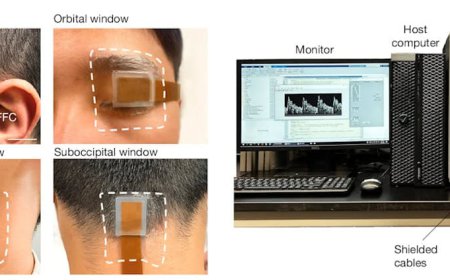Next-generation, nature-inspired sunscreens have a new molecular scaffold.
A team of researchers led by Professor Wybren Jan Buma of the University of Amsterdam and Vasilios Stavros of the University of Warwick (UK) has laid the foundation for using urocanic acid and its derivatives as a novel class of sunscreen filters. Urocanic acid is a naturally occurring UV-A and UV-B absorbing compound found in the skin.

The team investigated the light-absorbing, "sun-blocking" properties of urocyanic acid and its derivatives, both in isolated molecules and in solution. They present their results in two papers published in the journal Physical Chemistry Chemical Physics.
According to Wybren Jan Boomer, Professor of Molecular Photonics at the UvA's Van Hoff Institute for Molecular Sciences, the two papers provide detailed insights into the light-conversion process of urocyanic acid.
"This is an excellent starting point for further optimization of its photoactive properties," he says. "We envision many specific applications of urocyanic acid and its derivatives, especially in safe UV filters."
He hopes that urocanic acid can meet the need for a better, safer and more efficient sunscreen agent, replacing synthetic filters that are under discussion due to their potential adverse effects on health and the environment.
Natural sunscreen:-
Urocanic acid is actually a natural sunscreen. It is present in the upper layers of the skin and absorbs both UV-A and UV-B radiation, although with a sun protection factor (SPF) of only 1.58 it is much less effective than synthetic sunscreens. A more important drawback is that upon UV radiation, urocanic acid can be transformed into an immunosuppressive molecule.
"You might think that all of this doesn't make urocanic acid suitable for use in sunscreens," says Buma, "but it's certainly worth investigating. We think it's possible to design effective urocanic acid-based biomimetic sunscreens with a more favorable toxicological profile and optimize their photochemical and photophysical properties."
First fundamental understanding:-
Buma and colleagues began an extensive research program, starting with high-resolution laser spectroscopy of isolated molecules and supplemented by quantum chemical calculations. This led to a thorough understanding of how urocyanic acid interacts with UV-light and how it can be optimized by modifying the molecule.
Buma says the team is the first to describe the photochemical and photophysical properties at such a fundamental level. "Urocyanic acid has long remained a mystery to experimental spectroscopists and theoretical chemists alike. Our research has revolutionized this field."
His team also established that previously reported studies suffered from undetected experimental side effects, which should have been assigned to decomposition products rather than actual urocyanic acid molecules.
Behaviour in solution:-
To confirm the behaviour of urocyanic acid and its derivatives under practical application conditions, the research team also studied them in organic solvents and aqueous solutions. In collaboration with Professor Vasilios Stavros and colleagues at the Warwick Centre for Ultrafast Spectroscopy (UK), they applied time-resolved spectroscopy over a wide range of timescales, spanning 18 orders of magnitude; from femtoseconds to hours.
These studies provide important insights into how photochemical and photophysical properties can be tuned not only by molecular modifications, but also by the solvents used. This paves the way for optimizing potential sunscreen formulations based on urocanic acid derivatives. Furthermore, the team identified stable derivatives that could also reduce the immunosuppressive effects of "plain" urocanic acid.
These are currently being investigated, says Buma. "We hope that the current studies will spark renewed interest in the photoactive properties of this class of molecules. This will ultimately lead to novel sunscreen filters, but also to novel applications in areas where photothermal materials are employed."
Source :- phys.org, acgt.co.za, hims.uva.nl
















































